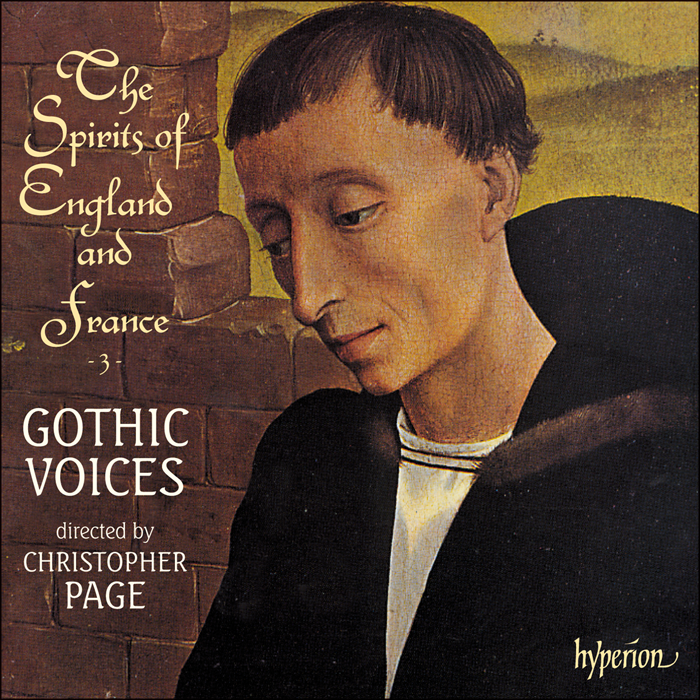The Spirits of England & France, Vol. 3 – Binchois and his contemporaries
Gothic Voices, Christopher Page (conductor)
CDA66783
In the last decades of the fourteenth century, composers working in the French tradition were sometimes musicians of profligate imagination. In addition to polyrhythms, extravagant melodic sequences and sudden dissonances, they sometimes created a sense of forward momentum in their compositions by sheer crowding of the texture, a legacy reaching back to the leading composer of the French Ars nova, Guillaume de Machaut (d1377). The music of Machaut, represented here by the exotic four-part ballade, Il m’est avis, was still being enjoyed in Italy around 1430 according to the theorist Ugolino of Orvieto, and even the most flamboyant aspects of late fourteenth-century style, fostered by Machaut’s successors, did not perish entirely in the 1400s. A composer might still return to them for a showpiece such as the ballade Laissiés ester. Here Gilet Velut, a choirman at Cambrai Cathedral from 1409 to 1411, laments the death of a composer (or singer). The grandiloquent poem, cast in ceremonious decasyllables, is set to music whose duple rhythms fight so determinedly against triple rhythms that the listener’s sense of contrapunctus is all but obliterated: in some passages we no longer sense that a tactical note-against-note counterpoint between cantus and tenor is the basic rationale of the piece. Such textures—designed to pack the moment with effects, overwhelming the ear and sweeping it onwards toward admiration—could still be regarded as a guarantee of a composer’s craftsmanship in the early fifteenth century as they had been three decades earlier. Velut uses polyrhythms to create his effect; the Gloria by Leonel Power (d1445) shows an English composer in his youth enjoying the French aesthetic of an almost furious texture crowded with events; to hear the five-part section which closes this Gloria is like plunging one’s head into a hive of bees.

